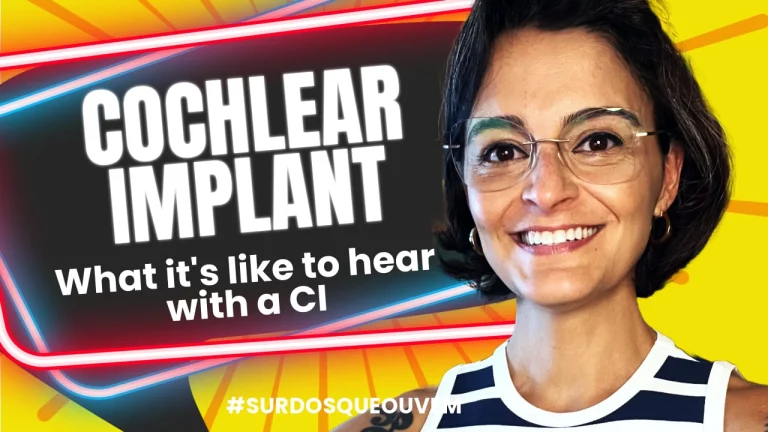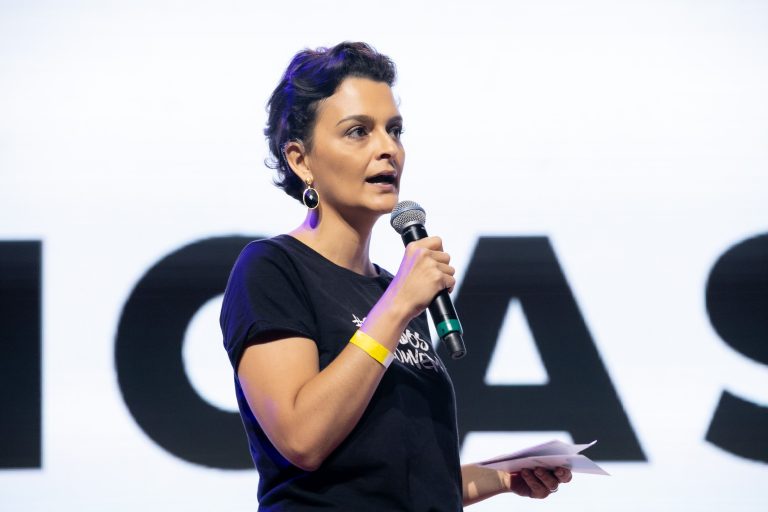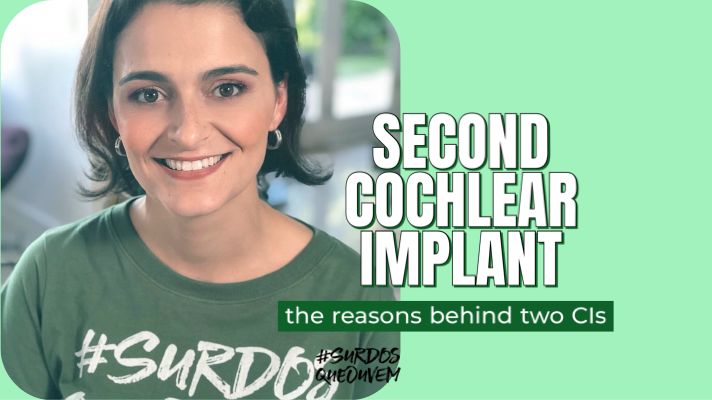Why cochlear implants are BAD: the Deaf community’s LIES
For decades, cochlear implants (CIs) have been hailed by clinicians and recipients as the most successful neural prosthetic device in medical history. They restore functional hearing access to individuals with severe to profound sensorineural hearing loss. Yet, if you spend five minutes searching online using terms like “why cochlear implants are bad,” you will inevitably stumble into a bizarre, intensely polemical fringe movement—the organized cultural opposition.
This opposition, driven by certain elements within the Deaf community, presents medical advancement not as a pathway to linguistic freedom, but as a form of “cultural genocide”. The objective of this report is to strategically dismantle these arguments – which are often rooted in ideological fear rather than clinical reality – by using the overwhelming weight of scientific consensus and the massive real-world success of this technology.
The global reality is a powerful rebuke to this cultural dogma. The total number of people worldwide who have received functional hearing via CIs is estimated to be over 1 million. This monumental figure represents a million individual choices, a million success stories, and a million refutations of the idea that deafness is purely an identity that should never be “fixed.” These statistics show that while cultural activists argue in abstract, the global public health consensus views hearing loss as an impairment that must be treated. Hearing health is brain health, but people who deny science are not ready for this conversation.
Why cochlear implants are bad?
The controversy is fundamentally a conflict between maximizing individual potential and preserving an adult-led cultural identity. Over 90% of children with hearing loss are born to hearing parents, and they overwhelmingly prioritize access to spoken language. The cultural argument seeks to impose a linguistic and social mandate on a population that often desires a different outcome. As Tom Bertling argued in his influential insider critique, A Child Sacrificed to the Deaf Culture, the culturalist opposition to CIs represents a demand that parents sacrifice their child’s optimal development for the sole sake of maintaining cultural membership.
Debunking why cochlear implants are NOT bad: The top 5 cultural dogmas
The opposition relies on a handful of highly emotional, yet factually thin, core claims intended to create doubt and fear among parents of deaf children and potential adult recipients. Here, the five most common cultural assertions are put through the merciless shredder of clinical data.
Lie 1: The cultural genocide hoax (CIs are minority oppression)
The most extreme rhetoric claims that medical intervention designed to provide auditory access constitutes “cultural genocide” or “minority oppression”. They even use the sign for cochlear implant in American Sign Language (ASL) as a “two-fingered stab to the back of the neck, indicating a ‘vampire’ in the cochlea”.
This hyperbole attempts to equate a standard, elective surgical procedure with ethnic cleansing – a truly absurd philosophical leap. The data shows this is an inherently contradictory position; critics have associated CIs with both “child abuse” and “cultural genocide”. If an action is truly genocide, it cannot simultaneously be framed as abuse requiring protection of the child. This lack of logical consistency confirms that the position is driven by extreme emotion and political posturing, not informed ethics. Critically, even opponents of CIs often concede that implantation “may well be in the best interests of each deaf child taken individually”. When the needs of the individual child (maximal communication access) conflict with the preservation mandate of the culture, the former must, and does, ethically prevail.
Lie 2: CIs kill Sign Language (the linguistic deprivation scare tactics)
Opponents often claim that reliance on spoken language input via CIs, particularly if American Sign Language (ASL) is excluded, may result in “linguistic deprivation” because ASL allegedly provides clearer linguistic access. This argument is an aggressive red herring.
In reality, the critical period of neural plasticity begins at birth and declines rapidly. Studies repeatedly confirm that children who receive early cochlear implantation (ideally before 9 to 11 months of age) achieve superior outcomes in spoken language and vocabulary compared to those implanted later. The evidence proves that early CI intervention prevents linguistic deprivation, it does not cause it. The true risk of limited language exposure exists during the lag time between diagnosis and intervention—a period often prolonged by parental deliberation fueled by cultural fear-mongering.
Lie 3: Deafness ssn’t a disability, it’s an identity (the ontological denial)
A central pillar of the opposition is the semantic argument that deafness should not be treated as a medical condition because it is a culture or identity, making medical intervention inappropriate. This is an attempt to defer to negative ontologies of Deafness and foreclose discussion on the contestability of hearing loss as a treatable condition.
However, clinical reality defines disability based on functional disparity – a limitation of functional ability compared to age/gender norms. When CIs provide measurable, statistically significant improvements in speech perception, speech intelligibility, and reading skills, the identity argument becomes an academic abstraction divorced from functional capability. The benefits of CIs extend far beyond simple sound perception; they are critical tools for educational and cognitive development.
Lie 4: CI recipients are “denying their identity” (the stigma and exclusion tactics)
Within some groups, individuals who elect for CIs are stigmatized, accused of “trying to become ‘hearing’ and thereby denying their deaf identity”. This position reveals the deep intolerance inherent in the cultural opposition, which seeks to police the boundaries of identity based on medical choices.
Yet, recipients themselves often view the CI simply as “just another hearing aid”. This technology facilitates communication, but does not erase a person’s identity or cultural affiliation. The opposition’s insistence that accepting technology constitutes a betrayal is a clear tactic designed to pressure individuals into maintaining cultural adherence at the expense of maximized functional communication.
Lie 5: The “sacrificed child” fallacy
The ultimate reframing of this debate comes from sources like Tom Bertling, who lived the experience of the culturally Deaf system. Bertling warned parents to be cautious of anyone attempting to “sacrifice a deaf child towards preserving a culture”. The opposition uses the term “sacrifice” to describe the CI surgery; however, the data compels a powerful ethical inversion.
The actual sacrifice is the denial of functional hearing access during the critical period of neural development. Delaying implantation, or refusing it outright, for the sake of cultural dogma is the real act of sacrificing the child’s neurological potential and educational opportunity. Bertling’s exposé of the culturally deaf community revealed historical tendencies, such as sacrificing education for “sham speech” , illustrating a long-standing pattern of prioritizing adult cultural politics over child welfare.
Table 1: Cultural dogma vs. Clinical reality: deconstructing the “lies”
| Deaf Culturalist Claim (The “Lie”) | Rhetoric Summary | Clinical/Ethical Counter-Fact |
| Cultural Genocide | CI is a form of oppression or cultural eradication.1 | The interests of the individual child (linguistic access) ethically supersede the preservation mandate of an adult-led culture.5 |
| Linguistic Deprivation | CI reliance, excluding ASL, delays critical language acquisition.6 | Early CI correlates directly with superior, age-appropriate spoken language skills, overcoming the risk of pre-treatment deprivation.9 |
| CI is “Child Sacrifice” | Implantation is an unnecessary, invasive procedure that sacrifices cultural identity.7 | The real sacrifice is denying a child functional hearing and language potential for the sake of cultural dogma, as affirmed by insider critiques.5 |
The clinical verdict: overwhelming evidence for early auditory access
The strategic targeting of the negative query “why cochlear implants are bad” must be countered with concrete, verifiable clinical outcomes that establish the CI as an essential, high-efficacy medical intervention.
The temporal imperative: maximizing neural plasticity
The success of a CI is strongly dependent on timing. Early detection and intervention are considered critical for the growth of speech and language skills.9 This is due to the principle of neural plasticity: the auditory cortex possesses its highest capacity for development and change immediately following birth, and this capacity decreases significantly over time.
The data confirms the superior developmental trajectory for early recipients. Children implanted between 5 and 11 months demonstrated age-equivalent language comprehension and better vocabulary outcomes compared to children implanted later. Furthermore, long-term studies, tracking children for an average of 8.6 years post-implant, confirm that a younger age of implantation remains statistically correlated with higher standard scores on language tests. By delaying implantation due to cultural or ethical hesitation, parents fundamentally limit their child’s opportunity to maximize their auditory and cognitive potential.
Functional outcomes: beyond simple sound perception
Cochlear implants offer functional benefits that transcend simple auditory input, demonstrating profound effects on overall cognitive development. Research indicates that children who receive early implantation show substantial improvements not only in speech perception and intelligibility, but also in receptive-expressive language ability, social skills, and critically, reading and cognitive skills. Some studies even report progress that exceeded what is typically observed in normal-hearing peers. The fact that CI access to spoken language improves systemic brain functions relevant to mainstream educational success demonstrates that the cultural opposition argues against intellectual and educational enrichment.
The benefits are equally strong for adults who lost hearing later in life (postlingual hearing loss). For this group, patients and clinicians can expect that approximately 82.0% will have improved their speech perception performance by 15 or more percentage points post-implantation.
Addressing scaremongering: complications and reliability myths
A key tactic of the anti-CI campaign is fear-mongering regarding surgical risk and device failure. However, clinical data establishes the procedure as safe, reliable, and durable over the long term.
Surgical safety and complication realities
Cochlear implantation is now a highly standardized and established surgical procedure for managing sensorineural hearing loss. While risks exist, they are low and manageable. A long-term retrospective study found a global major postoperative complication rate of 6.6%. Major complications such as wound infection and permanent facial nerve paresis are extremely rare, occurring at rates of 1.6% and 0.3%, respectively. Minor, transient issues, such as temporary vertigo or dizziness, are more common (up to 30.8%) but are considered typical, acceptable risks associated with inner ear surgery.
Device longevity and reliability
Any notion that CIs are unreliable or temporary technology is negated by comprehensive long-term data. The cochlear implant is designed to be a lifelong device. Studies tracking device longevity demonstrate exceptional survival rates: overall device survival exceeds 96% at 10 years and remains high at 91% at 20 years. While revision surgery is occasionally necessary (often due to device failure or medical issues), the overall explantation and reimplantation rate is low (3.32%).
The context of limited users
Opponents often highlight cases of non-use or limited progress as evidence of CI failure. However, clinical analysis shows that such outcomes are often tied to predictable, non-device factors. The most commonly identified risk factors for inconsistent or non-use include reliance on manual communication and, most importantly, the presence of additional disabilities.
Having an additional disability (e.g., autism or mental-motor issues) accounts for a significant variance in language outcomes. Furthermore, implantation at a chronological age of three years or older is also a significant risk factor for limited progress. These findings underscore that limited success is often a consequence of delayed intervention or pre-existing neurological conditions, not the inherent failure of the device.
Table 2: Cochlear implant long-term reliability and success metrics
| Metric | Data Point | Significance |
| Global Recipients | Estimated over 1,000,000 worldwide 2 | Confirms CIs as an established, globally accepted standard of care. |
| Post-Lingual Adult Success | 82.0% improve speech perception by $\ge 15$ percentage points 16 | Demonstrates high predictability of functional benefit for most adult recipients. |
| Major Complication Rate | Approximately 6.6% overall risk 18 | Low surgical risk profile, affirming safety. |
| 10-Year Device Survival Rate | Exceeds 96% 18 | Proves device robustness and long-term viability. |
The ethical imperative: trading function for cultural fiction
The systematic analysis of the cultural arguments against cochlear implantation reveals them to be fundamentally political, not clinical. The organized opposition attempts to leverage ethical terminology (genocide, sacrifice) to enforce cultural preservation, effectively demanding that a child trade optimal cognitive and linguistic function for adherence to an adult ideology.
The evidence is clear: hearing loss is a functional impairment, and like any functional impairment, and, when treated, it ensures the highest possible quality of life, educational attainment, and developmental success. With over 1 million people benefitting globally from CIs, the technology is neither experimental nor risky, but an established solution to severe hearing loss. Parents facing this decision should trust the overwhelming scientific consensus and the proven success rates, confidently rejecting the scare tactics and failed linguistic prophecies peddled by a subculture desperately attempting to maintain relevance.








